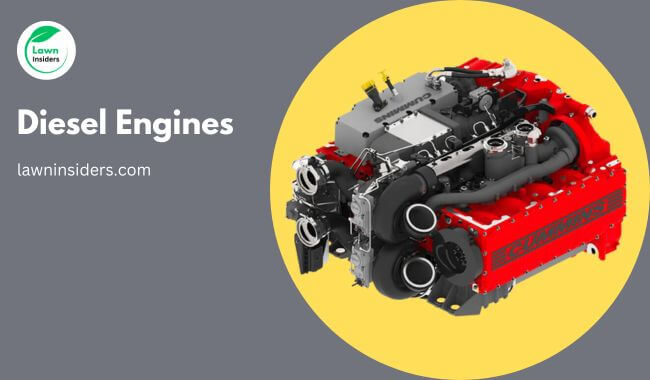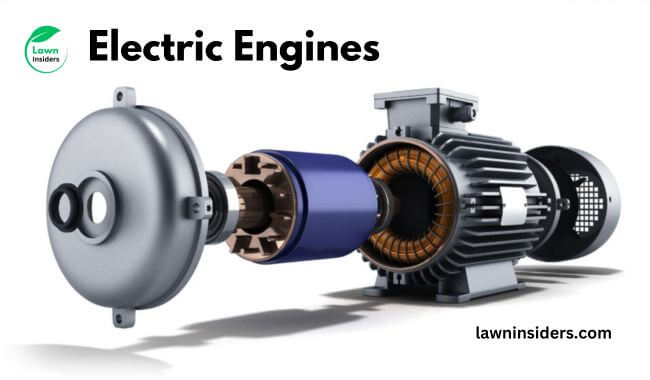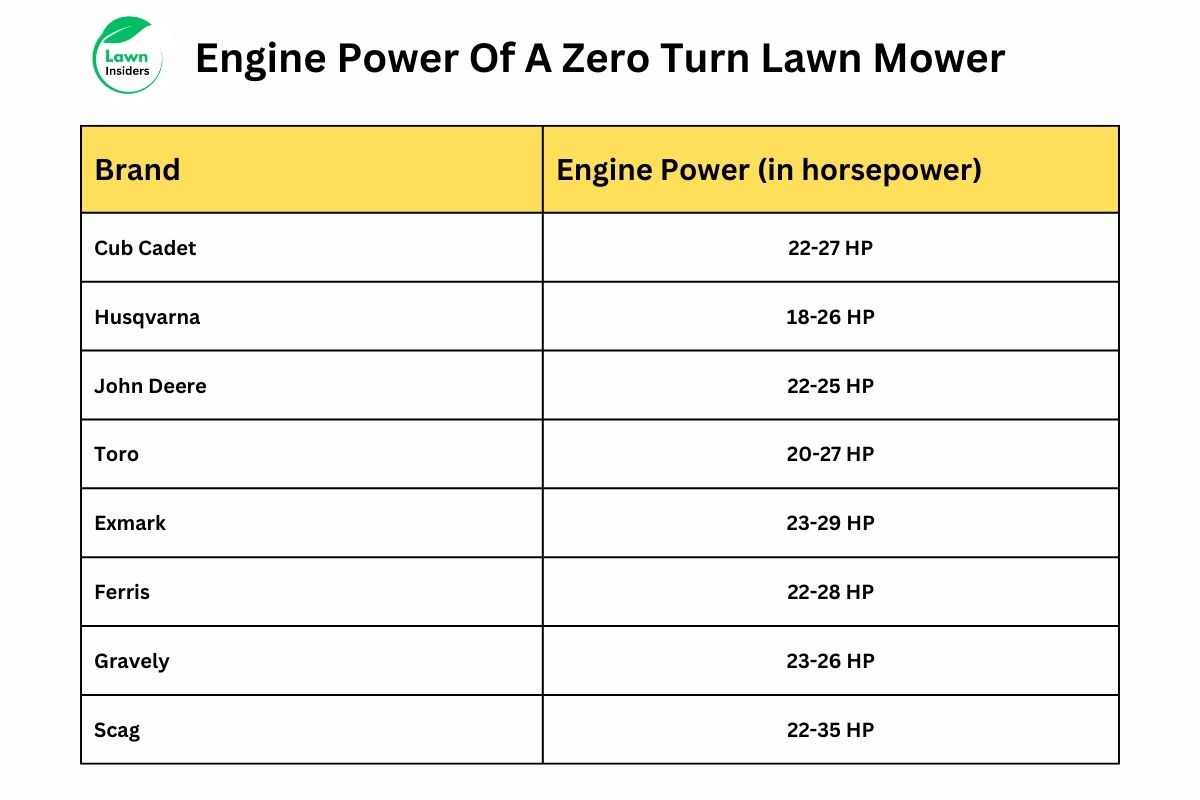Ultimate Zero Turn Mowers Buying Guide | Expert Advice & Tips

You’ve found the ideal spot if you want an effective and efficient method for keeping your lawn looking great. Because of their superior mobility, speed, and precision, zero-turn lawn mowers are a favorite for homeowners and professional landscapers alike.
To help you choose the best zero-turn lawn mower, we’ve compiled all the information you’ll need here. We have you covered at every level, from learning about the essentials to looking at the advantages and best suggestions.
A zero-turn mower will allow you to take your lawn maintenance to the next level. With a zero-turn lawn mower, you can cover more ground in less time and achieve a more even and accurate cut, which can improve the overall appearance of your lawn.
Zero-turn lawnmowers are adaptable since they can handle a variety of lawn sizes and terrain. Finally, their maneuverability reduces tiredness and pressure on the body.
Overall, a zero-turn lawn mower can be a valuable tool for maintaining the health and appearance of your lawn.
Consider these points before you buy a Zero Turn Lawn Mower so you can make a good decision. In this guide, there is a comprehensive detail of each point.
- Cutting Quality
- Engine Power of a Zero Turn Lawn Mower
- Cutting Width of a Zero Turn Lawn Mower
- Wheel Drive (Rear Wheel Drive
- Weight of Zero Turn Lawn Mower
- Engine Type of a Zero Turn Lawn Mower
- Height Settings in a Zero-Turn Lawn Mower
- Fuel Tank
- Oil Recommendations
Let’s discuss all the above points one by one.
Engine Type of a Zero Turn Lawn Mower:
There are several common types of engines in use in zero turn lawn mowers:
Gasoline Engines:
These are the most common engine type in zero-turn lawnmowers. They typically get power from unleaded gasoline and are available in various sizes and power levels.

Diesel Engines:
These are less common in zero-turn lawnmowers but can offer more power and torque than gasoline engines. They are typically more fuel efficient but may be more expensive to operate and maintain.

Electric Engines:
Some zero-turn lawnmowers are powered by electric motors, which can be more environmentally friendly and quiet than gasoline engines. However, they may have limited range and power compared to gasoline-powered mowers.

Hybrid Engines:
These engines combine a gasoline engine with an electric motor, allowing them to switch between the two power sources as needed. Hybrid engines may be more fuel efficient and have a longer range than electric ones but may be more expensive.

Overall, the type of engine used in a zero-turn lawn mower will depend on your personal preferences, budget, and the size and terrain of your lawn.
Cutting Quality a Zero Turn Lawn Mower:
The cutting quality of a zero-turn lawn mower is generally very good due to its sharp blades, precise cuts, and ability to cover more ground quickly and evenly.
These features allow for a clean, even cut that can improve the overall appearance of your lawn. However, it’s important to maintain the lawn mower regularly to ensure it operates at its best and delivers optimal cutting performance.
Engine Power of a Zero Turn Lawn Mower:
The engine power of a zero-turn lawn mower is an important factor to consider when shopping for a new mower. The engine’s power will determine the mower’s ability to handle different types of grass and terrain.
In general, a lawn mower with a larger engine will have more power and be able to handle tougher grass and terrain. A lawn mower with a smaller engine (Around 12-17 Horsepower) should be sufficient for small Lawns.
A lawn mower with a larger engine (18-25 horsepower) may be necessary for more extensive lawns or tougher grass and terrain. It’s also important to consider the fuel efficiency of the lawn mower’s engine.
Lawnmowers with larger engines may be more powerful but also use more fuel. If you are concerned about fuel costs, look for a lawn mower with a smaller engine with good fuel efficiency ratings.

Cutting Width of a Zero Turn Lawn Mower:
The cutting width of a zero-turn lawn mower is an important factor to consider when shopping for a new mower. When a lawn mower cuts grass, its cutting deck determines the cutting width. A wider cutting width means the mower can cover more ground in a single pass, saving time and effort.
The cutting width of a zero-turn lawn mower typically measures inches and can range from around 34 inches to 60 inches or more. The appropriate cutting width for your mower will depend on the size and terrain of your lawn.
A mower with a narrower cutting width (Around 34-42 Inches) may be sufficient for small lawns. For larger lawns or tougher grass and terrain, a mower with a wider cutting width (48 Inches or More) may be necessary.
It’s also important to consider the maneuverability of the mower. A wider cutting width may cover more ground in a single pass, but it may also be less maneuverable and more difficult to operate in tight spaces.
Quick guide for CUTTING WIDTHS of famous Brands:

Wheel Drive (Rear Wheel Drive):
A zero-turn lawn mower typically has rear-wheel drive because it allows for better maneuverability and control. With rear-wheel drive, the mower’s rear wheels are responsible for propelling the mower forward and backward This allows the operator to easily steer the mower in any direction, including making sharp turns.
The rear-wheel drive system of a zero-turn lawn mower controls by two separate hydrostatic transmission systems, one for each rear wheel.
This allows the operator to independently control the speed and direction of each rear wheel, allowing for precise maneuvering and control.

Weight of Zero Turn Lawn Mower:
The weight of a zero-turn lawn mower can vary significantly depending on the size and features of the mower. Zero-turn lawnmowers tend to be heavier than traditional lawnmowers due to their larger decks and hydrostatic transmission systems.
The weight of a zero-turn lawn mower can range from around 300 pounds for a small mower to over 700 pounds for a larger mower with a wider cutting width and additional features.
It’s important to consider the weight of a zero-turn lawn mower when shopping for a new mower, especially if you will be transporting the mower or storing it in a shed or garage. A heavier mower may be more difficult to move and require larger storage space.

Height Settings in a Zero Turn Lawn Mower:
The height settings on a zero-turn lawn mower define the adjustable height of the mower’s deck and blades. The deck is the area under the mower where the grass is cut, and the blades are the rotating blades that cut the grass.
Most zero-turn lawnmowers have a range of height settings that can be easily adjusted using a lever or dial. The height range will depend on the mower model, typically between 1.5 and 4 inches.
Choosing the appropriate height setting for your lawn is important based on the type of grass you have and your desired lawn appearance.
It’s also important to maintain the height setting of your mower regularly to ensure that it is operating at its best and delivering optimal cutting performance.

Fuel Tank of Zero Turn Lawn Mower:
The fuel tank capacity of a zero-turn lawn mower can vary significantly depending on the size and features of the mower. Zero-turn lawnmowers generally have larger fuel tanks than traditional lawnmowers due to their larger engines and wider cutting widths.
The fuel tank capacity of a zero-turn lawn mower is typically measured in gallons and can range from around 2 Gallons for a small mower to 7 Gallons or more for a larger mower.
Eventually, the fuel tank capacity of a zero-turn lawn mower is an important factor to consider when choosing a new mower, as it can affect the mower’s performance and convenience.

Oil Recommendations for Zero Turn Lawn Mower:
Zero-turn lawnmowers require 15W50 synthetic engine oil. Check your mower’s user guide first when choosing an oil. That saves time and ensures you have the right machine oil.
It is generally recommended to use high-quality. Unleaded gasoline with an octane rating of at least 87 for your zero-turn lawn mower. It is also a good idea to use a fuel stabilizer. Because it helps to prevent the gasoline from breaking down and gumming up the carburetor or fuel system. Avoid using fuels that contain ethanol, as ethanol can cause fuel system problems and may void the warranty on your lawn mower.
Using the correct type and amount of oil in your lawn mower is also important. Most zero-turn lawnmowers use a 4-stroke engine, requiring a specific oil type.
Check the owner’s manual for the manufacturer’s recommendations. Especially on the type and viscosity of oil to use in your particular model. High-quality detergent oil with an API rating of SJ or higher is generally recommended. Regularly check the oil level and add oil to keep the engine lubricated.
It is also a good habit to follow the manufacturer’s recommended maintenance schedule for your lawn mower, which may include regular oil and filter changes. Proper maintenance will help ensure that your lawn mower runs smoothly and efficiently.

Price Range of Zero Turn Lawn Mower:
The price range for a zero-turn lawn mower can vary significantly depending on the size of the mower, the features it includes, and the brand.
On the lower end of the price range, you can find basic models with smaller cutting decks and fewer features for around $2,500 to $3,000.
Mid-range models with larger cutting decks, more powerful engines, and additional features such as mulching capabilities or bagging systems may cost around $3,000 to $5,000.
High-end models with premium features, such as LED headlights and extra-large cutting decks, can cost upwards of $5,000 or more.
It is important to consider your budget and the specific needs of your lawn when choosing a zero-turn lawn mower. You may find a good value by purchasing a used lawn mower or looking for a model with the desired features at a lower price point.
Remember to also factor in the cost of maintenance and repairs when budgeting for a lawn mower, as these can add up over time.

Warranty of a Zero Turn Lawn Mower:
A warranty is a guarantee provided by the manufacturer of a product. Like a zero-turn lawn mower, it offers to repair or replace parts that expire within a specific duration. The warranty period and covered parts depend on the manufacturer and product.
A zero-turn lawn mower’s warranty may cover material or artistry issues for a particular number of years or hours. The warranty may also cover certain parts. Some warranties may include additional perks, such as free repairs or maintenance for a certain period.
It is important to read the manufacturer’s warranty carefully to understand the terms and conditions of the coverage. You must follow the recommended maintenance schedule for your lawn mower.
It helps to ensure that the warranty remains valid if you experience a problem with your lawn mower covered by the warranty. You will typically need to bring it to an authorized service center for repair.
Conclusion:
In conclusion, a zero-turn mower is a strong and efficient tool that can completely transform how you tend your lawn. Zero-turn mowers are the best option for large yards and intricate landscapes because of their precision cutting and quick speed. With a zero-turn mower, you can say goodbye to long, laborious mowing sessions and welcome simple, effective lawn care.
